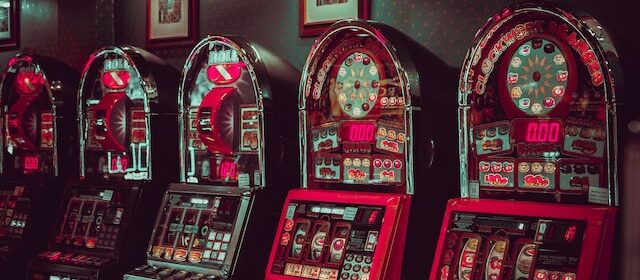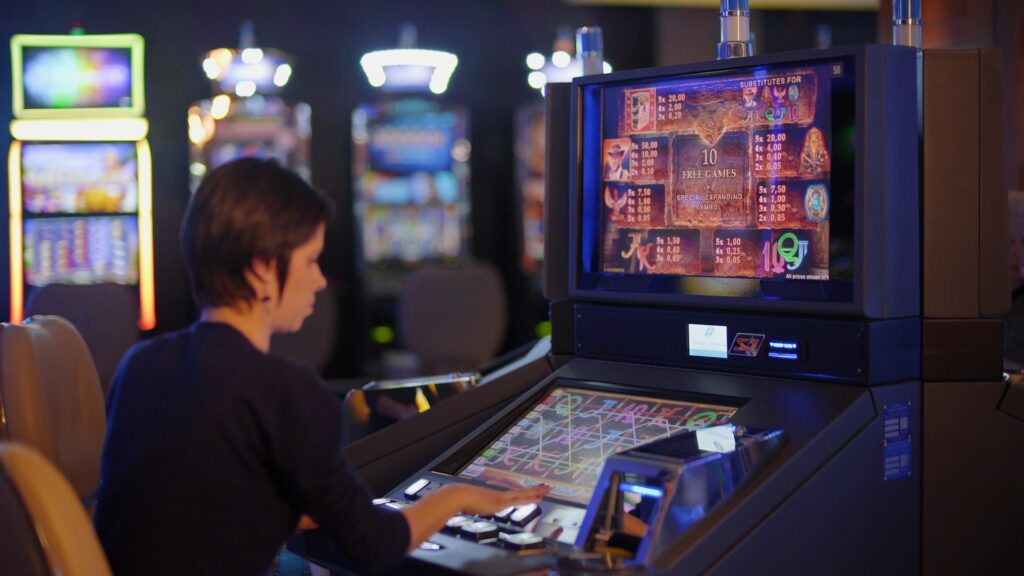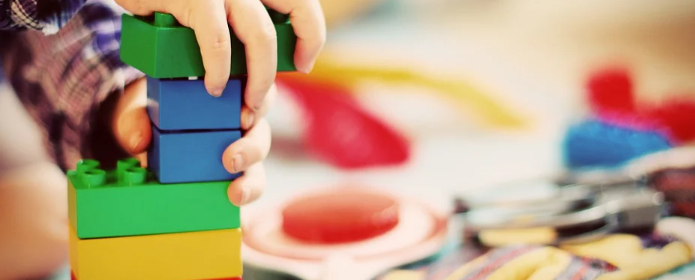The Psychology of Slot Game Design

In the world of online casino gaming, slot games have become incredibly popular. From the flashing lights to the enticing sound effects, เว็บสล็อต games have a unique ability to captivate players for hours on end. But have you ever wondered why some slot games seem to be more engaging than others? The answer lies in the psychology behind their design. In this article, we delve into the factors that make slot games so irresistible and explore the techniques employed by designers to keep players engaged.
Visual and Auditory Stimuli
 Slot games are known for their vibrant colors, catchy soundtracks, and captivating animations. These visual and auditory stimuli create an immersive experience that grabs players’ attention right from the start. The combination of bright colors and exciting audio cues triggers the brain’s pleasure centers, releasing dopamine. This “feel-good” neurotransmitter can make the gameplay more enjoyable and reinforce positive associations.
Slot games are known for their vibrant colors, catchy soundtracks, and captivating animations. These visual and auditory stimuli create an immersive experience that grabs players’ attention right from the start. The combination of bright colors and exciting audio cues triggers the brain’s pleasure centers, releasing dopamine. This “feel-good” neurotransmitter can make the gameplay more enjoyable and reinforce positive associations.
Random Rewards and Reinforcement Schedules
Slot games primarily rely on the principle of intermittent reinforcement to keep players engaged. The unpredictability of winning encourages players to keep spinning the reels in anticipation of the next big win. By incorporating a variety of reward frequencies, from small payouts to massive jackpots, game designers create a sense of excitement and suspense that keeps players coming back for more.
Gamification Elements
To enhance player engagement, slot game designers have borrowed concepts from video games and applied them to their designs. Gamification elements such as leveling up, unlocking achievements, and completing challenges give players a sense of progression and achievement. These features tap into our innate desire for competition and achievement, keeping players engaged for longer periods.
Social Interaction
Humans are social creatures, and incorporating social elements into slot games has proven to be an effective way to increase player engagement. Many modern slot games now feature social features such as leaderboards, chat functions, and multiplayer modes. These elements foster a sense of community and enable players to connect with friends or compete against other players, adding an extra layer of excitement to the gameplay.
Personalization and Customization
Slot game designers understand the importance of personalization in keeping players engaged. By allowing players to customize their avatars, select themes, and change background music, they create a more personalized gaming experience. When players have the freedom to make choices and express their individuality, it fosters a deeper connection with the game and increases their overall engagement.

Psychological Conditioning
Slot games employ psychological conditioning techniques to manipulate player behavior. Features like near-misses, where players come close to winning but fall short, create a sense of “almost winning,” triggering the desire to keep playing to achieve that elusive win. Additionally, bonus features and surprise rewards activate the brain’s reward system, reinforcing a positive association with the game.
Conclusion
The psychology behind slot game design is a fascinating blend of visual and auditory stimuli, intermittent reinforcement, gamification elements, social interaction, personalization, and psychological conditioning. By understanding and utilizing these techniques, game designers are able to create engaging experiences that keep players coming back for more.


 There are a lot of different shapes, sizes, and compositions of cigars. Each one has its unique flavor, scent, and strength. It all depends on your preference, whether you want a mild or strong cigar. The cigar size is also essential because it will affect the duration of your smoking time. It would help if you also considered the temperature when choosing the best cigar for you. But when it comes to the composition of the cigar, you need to pick the one with the best and finest tobacco.
There are a lot of different shapes, sizes, and compositions of cigars. Each one has its unique flavor, scent, and strength. It all depends on your preference, whether you want a mild or strong cigar. The cigar size is also essential because it will affect the duration of your smoking time. It would help if you also considered the temperature when choosing the best cigar for you. But when it comes to the composition of the cigar, you need to pick the one with the best and finest tobacco. Once you know how to choose a good cigar, you will want to try different cigars. You can go to your local cigar store or even online and buy different cigars. The variety is endless, and they will all give you a diverse experience. You can even try smoking a cigar rolled with other tobacco like pipe tobacco or cigarette tobacco. There are so many choices available for you, so don’t hesitate to try as many as possible. Many people love smoking cigars because of their rich flavor. Still, it is not for everyone, especially those who are not used to it.
Once you know how to choose a good cigar, you will want to try different cigars. You can go to your local cigar store or even online and buy different cigars. The variety is endless, and they will all give you a diverse experience. You can even try smoking a cigar rolled with other tobacco like pipe tobacco or cigarette tobacco. There are so many choices available for you, so don’t hesitate to try as many as possible. Many people love smoking cigars because of their rich flavor. Still, it is not for everyone, especially those who are not used to it.
 It is a good idea to move potential prefixes to the broken tray. This can help prepare the mind to look at the possible matches together. These parts should be transferred to the perfect side of this table. You will most likely utilize them as hooks that will allow you to refer to another phrase. Evaluating these phrases will soon open up several possibilities for you, as they will enable you to win terms within your menu, perhaps not on the board. Of course, you will find the words you use every day, such as “to be,” “could be,” “to be,” but you will also find some vague phrases that you must have in your arsenal of possible hooks.
It is a good idea to move potential prefixes to the broken tray. This can help prepare the mind to look at the possible matches together. These parts should be transferred to the perfect side of this table. You will most likely utilize them as hooks that will allow you to refer to another phrase. Evaluating these phrases will soon open up several possibilities for you, as they will enable you to win terms within your menu, perhaps not on the board. Of course, you will find the words you use every day, such as “to be,” “could be,” “to be,” but you will also find some vague phrases that you must have in your arsenal of possible hooks. These are phrases like “foreground,” “dining table,” and “door,” two names together as you can. Whenever someone touches a term, do a quick psychological test, and determine if there are any words you can attach to the beginning or end of the word to make another sentence. This is one of the reasons why shuffling cards on your tablet is a great idea. Depending on who you’re playing against, they may think they’ve played it smart, assuming you can only put an S of Dan, or for the final letter, also in this scenario, an S at the beginning. If their term is likely to be compounded, you can tell by a triple play that they have left you open to this type of move.
These are phrases like “foreground,” “dining table,” and “door,” two names together as you can. Whenever someone touches a term, do a quick psychological test, and determine if there are any words you can attach to the beginning or end of the word to make another sentence. This is one of the reasons why shuffling cards on your tablet is a great idea. Depending on who you’re playing against, they may think they’ve played it smart, assuming you can only put an S of Dan, or for the final letter, also in this scenario, an S at the beginning. If their term is likely to be compounded, you can tell by a triple play that they have left you open to this type of move. They usually contain tiles with a decreasing point value. It is not difficult to be intimidated by unique words. Keep shuffling the cards to see what the conditions might be. These phrases are best played in the sport, as there isn’t as much room to function as the game proceeds with a very long moment. Consider the unique letters they are frequently used with. Build a bank of these words on your memory card, and it will soon be a challenge to draw them. For me, it was all about correspondence; if the tiles were swapped, it makes sense not to switch them. Their counters are probably higher than yours; they only used them in moderation. Expand your Scrabble vocabulary. Practice these new skills and notice the increase in your score. Over time, people will watch you work better and learn from you.
They usually contain tiles with a decreasing point value. It is not difficult to be intimidated by unique words. Keep shuffling the cards to see what the conditions might be. These phrases are best played in the sport, as there isn’t as much room to function as the game proceeds with a very long moment. Consider the unique letters they are frequently used with. Build a bank of these words on your memory card, and it will soon be a challenge to draw them. For me, it was all about correspondence; if the tiles were swapped, it makes sense not to switch them. Their counters are probably higher than yours; they only used them in moderation. Expand your Scrabble vocabulary. Practice these new skills and notice the increase in your score. Over time, people will watch you work better and learn from you.

 Toys are not age-appropriate but are also too advantageous for the child’s development and progress. Although many special toys could improve your child’s abilities and performance, it may be better to choose a toy that meets your child’s needs at that time.
Toys are not age-appropriate but are also too advantageous for the child’s development and progress. Although many special toys could improve your child’s abilities and performance, it may be better to choose a toy that meets your child’s needs at that time.